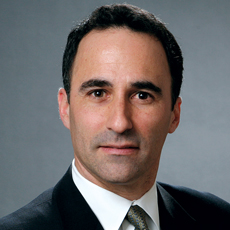
The Congressional vote in April to delay ICD-10 implementation by one year has many in the long-term care industry wondering what they should do next. Some organizations initiated physician and coder training during the first quarter of 2014, while others were in the planning stage of engaging physicians to ensure a smooth transition. Regardless of the stage an organization was in, for the most part, forward momentum came crashing to a halt when the new 2015 compliance date was revealed.
In many cases, progress was replaced by talk of uncertainty. Will the 2015 deadline stick? Will any ICD-10 knowledge already gained be lost due to non-use? What will be the unrecoverable cost of repeated training and redundant work?
Instead of seeing the ICD-10 glass as half empty, though, forward thinking long-term care facilities will see it as an opportunity to capitalize on the delay. In fact, the delay really provides new opportunities to build momentum and enhance engagement strategies among physicians and staff. By focusing on the following five strategies, long-term care organizations — including those that have not yet begun their preparations — can take advantage of the extra time to ensure a successful ICD-10 conversion:
Strategy 1: Continue education. The old adage “if you don’t use it you lose it” holds true for ICD-10 training. A gap between training and implementation does not bode well for a successful transition because of ICD-10’s higher degree of specificity and clinical detail. That is why it’s important to use the delay to continue training physicians, coders, MDS coordinators and nursing staff. Where possible, customize training to long-term specialty areas and focus on the codes used most often in these environments. Use physicians as peer mentors to boost engagement and when classroom training is complete, implement a dual-coding process that allows the organization to monitor and address issues as they arise.
Strategy 2: Engage physicians. One of the biggest risks to come about from the delay is that clinicians are likely to pull back and shift their focus to other, more pressing patient care and operational initiatives. Consequently, organizations must work with their medical directors and physician leaders to ensure they fully understand all the benefits of ICD-10 — not only for patient care and diagnosis management, but also for improved reimbursement rates and the revenue cycle. By leveraging a medical director champion, organizations can better express the value of the code set to physicians and explain how its broadened specificity will help physicians plan their patients’ care. From there, organizations can also engage physician leaders in the adoption process, since other physicians may respond well to receiving information from their peers. All physicians should be kept abreast of new developments, available tools and opportunities to participate in training and testing programs.
Strategy 3: Improve clinical documentation. In many areas, ICD-10 codes replace current unspecified codes with much more specific clinical details. Vague or insufficient documentation, therefore, will lead to inaccurate coding and/or multiple contacts between coders and clinical staff to clarify the appropriate codes — all of which puts revenue at risk. By working now to improve clinical documentation, organizations can realize improved workflows — with coders spending less time seeking additional information from physicians — and a more coordinated process between physicians, nursing staff and MDS coordinators. Additionally, improved documentation practices that include more detail will provide clinical and care quality benefits, allowing for opportunities to mitigate changes in condition. The extra year affords time to aim for best practice clinical documentation using the new codes, which will also help improve clinical workflows and outcomes, speed billing, reduce risk and drive financial performance. By reinforcing documentation practices and leveraging EHR technology and data, organizations gain specific information in a structured format that can help coders and billers select the right codes and speed the reimbursement process, all while improving patient care.
Strategy 4: Understand the data. Looking beyond the compliance deadline, ICD-10 serves in supporting advanced clinical decision support and analytics for long-term care organizations. With ICD-10 providing more detailed information, organizations can better understand their patient populations, make more appropriate referrals, mitigate re-hospitalizations, maximize reimbursement and improve the revenue cycle. By leveraging this data, long-term care providers can benefit from a more comprehensive view of specific patient populations that will, in turn, help improve patient outcomes and financial performance.
Strategy 5: Take advantage of vendor partnerships. As LTPAC facilities work through the transition, the vendors they work with are a great resource to help navigate the transition and develop effective transition plans. In addition, it is critical for organizations to be able to transmit information to key vendors such as pharmacy, lab and payers. Organizations should engage with these key vendors on their transition plans to identify and execute the necessary testing to support the transmission of codes.
In today’s environment of reduced government reimbursement and greater regulatory restrictions, the financial viability of long-term care providers is constantly at stake. For many, the ICD-10 delay adds to those pressures and may tempt them to temporarily put the initiative on the shelf. However, these organizations cannot afford to be complacent about ICD-10. Instead, they should take full advantage of the delay to build even greater momentum and support for the eventual ICD-10 implementation.
The delay is an opportunity to build a stronger foundation and to reinforce how ICD-10 supports physicians’ commitment to providing the best diagnosis management and care plan possible, while also improving financial performance. Those organizations that succeed will be the ones that use this time to plan, to train for and to implement a smooth transition that benefits the organization, clinicians and patients.
Steve Pacicco is the CEO of SigmaCare, a leading EHR partner for long-term and post-acute care providers.



